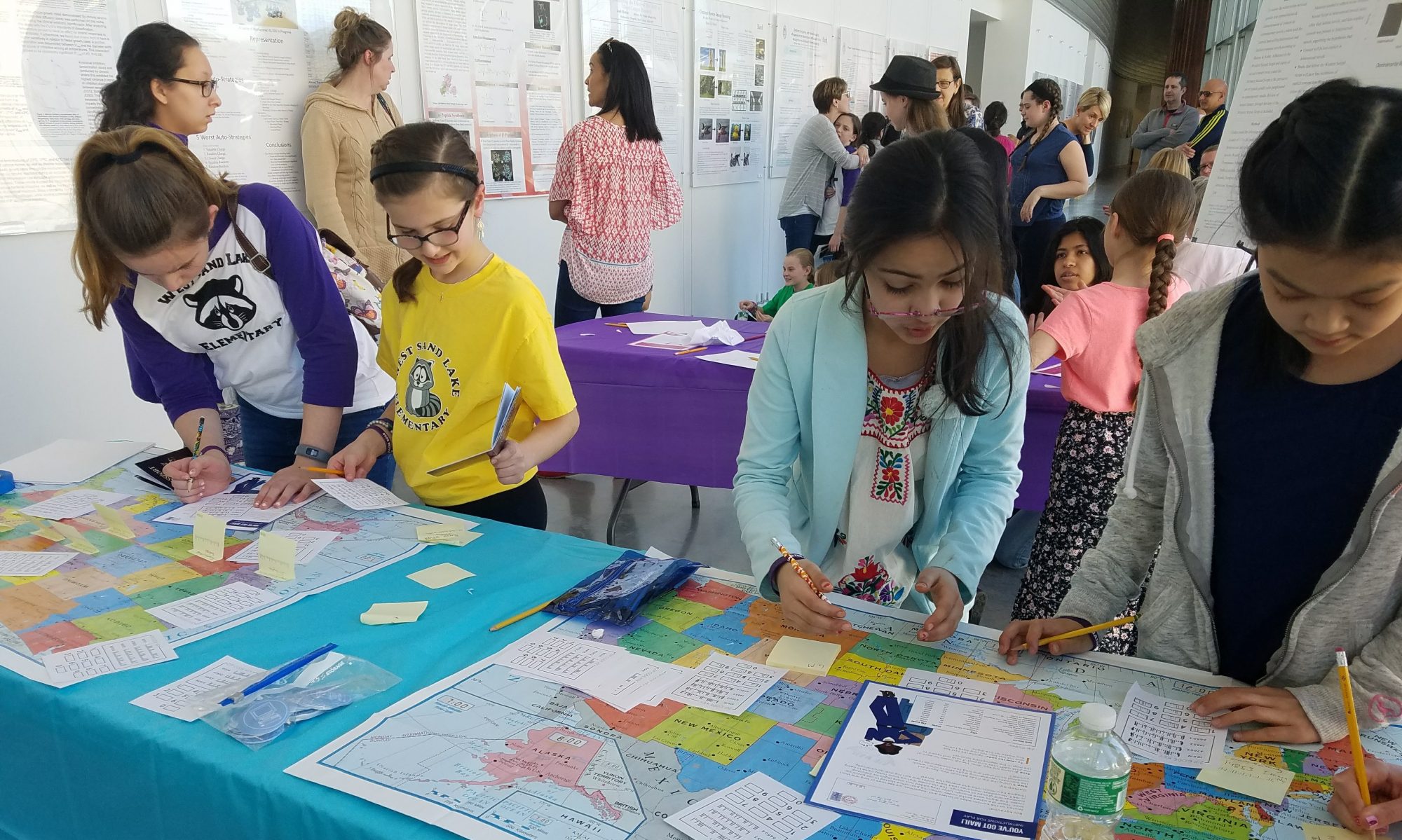Today was our last day together! Although we had to part ways today, I’m sure that our mathematicians will continue their explorations within mathematics wherever they may go.
To help you on your way, here are some resources you might be interested in:
Books:
Websites:
What if? Answering “What if?” questions with math, physics, and more.
George Hart A mathematical sculptor, father of the famous ViHart.
Games:
Gomoku is also played on a Go board
Videos
Numberphile https://www.youtube.com/user/numberphile
MoMath Math Enounters https://www.youtube.com/user/MuseumOfMathematics/videos
Computerphile https://www.youtube.com/user/Computerphile
If you have anything that you would like me to add to this list, please email it to me at jjshin@optonline.net.
In our Proofs and Investigations module, we examined some hat problems that dealt with the issue of limited information. It reminded me of a similar, very famous problem about eye color. A version of it was written by Randall Munroe, I have transcribed it here:
A group of people with assorted eye colors live on an island. They are all perfect logicians — if a conclusion can be logically deduced, they will do it instantly. No one knows the color of their eyes. Every night at midnight, a ferry stops at the island. Any islanders who have figured out the color of their own eyes then leave the island, and the rest stay. Everyone can see everyone else at all times and keeps a count of the number of people they see with each eye color (excluding themselves), but they cannot otherwise communicate. Everyone on the island knows all the rules in this paragraph.
On this island there are 100 blue-eyed people, 100 brown-eyed people, and the Guru (she happens to have green eyes). So any given blue-eyed person can see 100 people with brown eyes and 99 people with blue eyes (and one with green), but that does not tell him his own eye color; as far as he knows the totals could be 101 brown and 99 blue. Or 100 brown, 99 blue, and he could have red eyes.
The Guru is allowed to speak once (let’s say at noon), on one day in all their endless years on the island. Standing before the islanders, she says the following:
“I can see someone who has blue eyes.”
Who leaves the island, and on what night?
There is no easy trick to this question. No reflective surfaces or wording tricks. It is a solid, well known logic problem. Good luck!
We examined another infinite process today in Problem Solving, this one involving slicing and attaching squares. We derived a general formula for the perimeter using patterns we found in the length and the width of the object. We also attempted to find all of the ways four cubes can be combined to make unique figures. Thinking about this problem, I wondered how many different kinds of figures I could make with four tetrahedrons instead of four cubes.
Can you describe all of the polyhedra I can make using only four tetrahedrons that are attached face to face?
For our Mathematical Artifact of the day, we created hexaflexagons, figures that fold and unfurl to reveal patterns of shapes and colors. I used the cyclic diagram below to show all of the states and paths between every possible pattern on Siira’s flexagon.
Can you draw your own diagram that describes a flexagon that you made?
 |
| A mathematician shares his flexagon |
For our Puzzles and Logic module, we tackled a very famous probability paradox called the Monty Hall Dilemma. Faced with choosing doors hiding cars or goats, we developed a strategy that yielded success 2/3rds of the time! It is often used as a demonstration of how our intuition can lead us astray in probability problems like this one:
There are three boxes:
1. a box containing two gold coins,
2. a box containing two silver coins,
3. a box containing one gold coin and one silver coin.
After choosing a box at random and withdrawing one coin from that box at random, if that happens to be a gold coin, what is the probability that the other coin in the box is gold?
Be sure to justify your answer as we did for the Monty Hall problem!
For our Computer Science module, our mathematicians finished and shared the projects they have been developing. Some animations, interactive pictures, and games were made to show off our programming prowess.
 |
| Mathematicians share their programming work |
At the end of the day, we shared one last math salute as we parted for one last time. Our first Bard Math CAMP has come to a successful conclusion, and I am glad that I got to share some time with all of you.
Best Wishes,
Justin Shin



